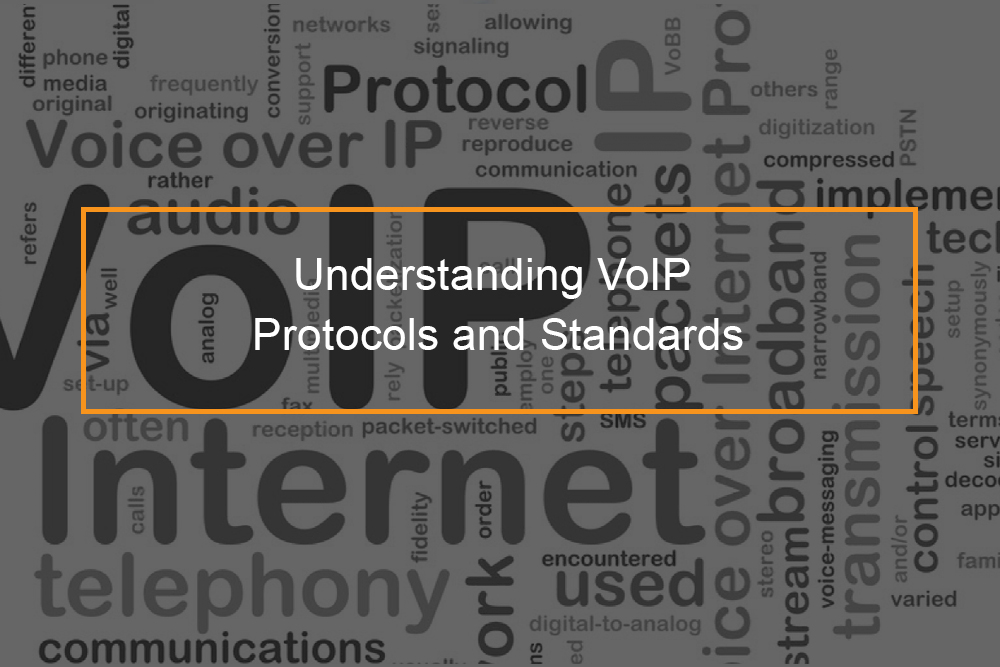Learning how to set up a call center

How to Start a Call Center: A Step-by-step Guide
If your company has outgrown the phone system it was using, knowing how to set up an automated call center will improve the experience for both agents and customers and streamlines business processes that are time-consuming and provides an affordable communication solution.
From determining the business’s goals to choosing the best software for a call center to educating employees and continuously monitoring agent performance, there’s plenty to think about. Our step-by step guide to the creation of a call center will guide you through each stage of the procedure. How can I start my own call center? What are the advantages from call center services?
Table of Contents
How can I start my own call center?

How can I start my own call center? The process of starting the call center of your dreams may be stressful but rewarding. It is a meticulous process that requires planning, investment and purchase of the required equipment and resources. This step-by-step guide will start: Create and establish Call Center Goals. Select the Call Center type, design Call Center’s Budget, determine the need for staffing, select the right equipment and software for your Call Center Create Call Center scripts and training materials Find and train employees and provide outstanding customer service and consistently monitor the performance of your call center.
Step 1: Develop and Set Call Center Goals
Decide why you would like to establish an own phone center, determine possible business benefits and establish goals that the call center can help your company reach.
The best methods for establishing goals for a call center include:
- Keep Goals Specific: Don’t make generalizations such as “more sales” or “increased productivity.” Instead create highly specific, quantifiable targets like, “A 10% increase in sales within the first quarter,” or “Cut average handle time in half by the end of the calendar year.”
- Set Realistic Goals: Make sure that your goals are achievable, pertinent to your overall business strategy and aligned with the current stage of business, staff resources and customer base size budget, and time-frame.
- Divide Goals Into Milestones: Break the “main goal” into quarterly monthly, quarterly, or sometimes even daily “milestones” to stay on pace, enhancing the process of managing goals along with project deadlines. avoid burnout among employees, and efficiently allot the resources.
- Determine How Goals Are Measured: Develop a standard way to track and evaluate general progress towards goals and the main elements that influence it. Call center metrics such as first call resolution rate and agent talk time, the average volume of calls, abandonment rate, and the average handle time offer quantitative insights into the activities of call centers and the performance of agents. Customer surveys and speech analytics can provide qualitative information on satisfaction with the service, training materials, as well as the customer experiences.
Step 2: Choose Call Center Type
Then, decide which kind of contact center will be the most suitable choice for your business.
The most common kinds of call centers are:
| Call Center Type | Functionality | Best For | Key Features |
| Virtual Call Center | Cloud-based VoIP call center accessible in any location/on any device with a working Internet connection, available for both in-office and fully remote teams | Offers flexibility, scalability, and and advanced VoIP features that benefit all business types and sizes | – Desktop/mobile softphone applications plus integration with existing desk phones
– Managed offsite by the call center service provider – Call flip to switch between devices during an active call |
| Onsite Call Center | Traditional call center hosted onsite by the business using it, calls facilitated via the wired PSTN network | Businesses with existing hardware and equipment they want to continue using, or entirely in-house teams | – Onsite server tied to a singular location
– End user is responsible for installation, maintenance, and hardware costs |
| Remote Call Center | Entirely off site call center powered by international outsourcing | Startups and small businesses that want to avoid paying for a physical office space | – Team collaboration tools and UCaaS features like team chat, web conferencing, and virtual whiteboard
– Remote call forwarding |
| Inbound Call Center | Receives incoming calls | Customer service, tech support, order processing, appointment scheduling | – Interactive Voice Response (IVR)
– CRM integrations and screen pops – Call routing and call queueing |
| Outbound Call Center | Places outgoing calls | Sales calls, nonprofit/political campaigning, mass emergency alerts, appointment reminders | – Auto dialer modes (Preview, Progressive, Power, Predictive) to automatically dial phone numbers
– TCPA Compliance and List Management |
| Blended Call Center | An inbound/outbound call center | Businesses that have a fairly equal amount of incoming and outgoing calls or peak seasons for specific call types | – Automatically reassigns agents to queues according to real-time call volume
– Contains both inbound and outbound call center features |
| Omnichannel Contact Center | Unites voice calling and digital communication channels like chat, SMS, social media messaging, and video conferencing in one omnichannel interface | Large-scale/enterprise-level businesses focused on automating customer service and sales across channels | – Intelligent Routing
– Intelligent Virtual Assistants (IVAs) – Conversational AI |
Step 3: Create A Call Center Budget
The cost to start an enterprise in call centers ranges between $2,000 and $25,000 and beyond as well as varying in line with the type of call center as well as the amount of employees, the use of equipment and software, the billing structure, and other features (to give a few examples.)
The most important aspects to be considered when setting up the call center (and the average cost) are:
- Employee Salary: The most basic salary for call center jobs per year is the following: $35,000+ for each agent in the call center and $75,000 for every employee of the IT team in-house and the average salary of $65,000+ per employee. Hourly pay, contractors and remote teams may aid in reducing the cost of salaries.
- Office Space: Alongside office space, call centers require facilities to house their own servers or equipment. Remote teams do not have the expense of office space completely and are able to rent meeting rooms on a per-hour basis as needed.
- Equipment and Hardware: In-house call centers can anticipate spending more than $5,000 for the hardware required, including servers and desk phones, plus ongoing costs for maintenance and installation. Cloud call centers need only VoIP equipment. They allow employees to connect to the business telephone system using their personal phones or tablets, laptops or desktop computers. Additional devices like headsets as well as VoIP phones can be purchased.
- Call Center and Business Software: Most call center software ranges from $20-$100+/agent/month, with scalable plans and volume discounts available. However, depending on the provider selected, business owners may also need to purchase CRM software ($20-$40+/user/month), team chat and video tools ($25+/agent/month), and project management systems ($10-$15+/user/month).
- Employee Training and Customer Support: Training for employees: Basic employee training, such as webinars on demand are available with the software for call centers, however personalized, in-person training is available with costs. While some levels of customer service are offered in all call center platforms, prioritization or 24/7 omnichannel support is an additional cost.
Step 4: Determine Staffing Needs
After you’ve established the budget then you’ll be in a position to determine the amount of employees you could afford to bring on- and determine the posts you’ll need.
The most crucial call center management roles include:
- Call Center Manager: Outlines supervisor and agent role, analyzes expectations of the customer and business requirements, defines and monitors KPIs for monitoring agents’ and call center performance. Reports directly to the business owner.
- Call Center Supervisor: Trains and oversees and provides assistance in real-time as well as feedback for agents. manages the performance of managers and is accountable to the manager of the call center
- Call Center Agent: Communicates direct to clients, offers support to sales and customer service Represents the company’s brand to consumers Reports to supervisors.
Other jobs such as an tech support group, web creator, as well as HR representative are available as temporary employees on contract basis until the budget allows additional full-time employees.
To determine the required number of employees to be employed, look at the following:
- Call volumes
- Talk time
- Average Handle Time
- Customer self-service options
- Average call wait time
- Average call queue lengths
- Average number of missed/abandoned customer calls
Step 5: Select Call Center Software And Equipment
The choice of the correct technology for a call center is the most crucial aspect to consider when the process of starting a call center and it is what determines the success or success or. In this article, we’ll explain which features to seek out in software for call centers and different Software as a Service (SaaS) tools.
Call Center Software as a Service
Call center SaaS Cloud VoIP calling, along with third-party integrations, analytics, performance monitoring advanced call management strategies and automation for streamlining the workflow, agent work as well as customer service.
Call center services offer the option of tier-based pricing, which means that businesses only pay for features that they are currently using. These systems evolve along with your call center, providing advanced features as separate extensions or by scaling up to the next bundle plan level.
Call center features that are essential to call centers include:
- Call routing calling, call forwarding, park, call transfer call queueing
- Blocking calls and Caller ID
- Extensions for users as well as Direct Inward Dialing (DID)
- Interactive Voice Response (IVR) and Automatic Call Distribution (ACD)
- Call monitoring, transcription and recording call whisper call barge
- Custom-built and historical real-time reporting, as well as template-based
- Integrations from third-party companies with Third-party CRM integrations (Customer Relations Management) tools, video conferencing platforms, tools for managing projects and helpdesk software.
Open Source Call Center Software
Open source software for call centers is a no-cost alternative to paid platforms since it is made available to the general public under a license which permits anyone to modify the software, distribute it, and use it. Open source software allows users to create a totally customized call center service by adding channels, features and other functions at a whim.
Although open source software requires at least a basic understanding of code, developer communities ease the procedure by providing lines of code along with installation instructions.
Call Center Hardware and Equipment
Call center software requirements and hardware will be required if you select a virtual center or an in-house.
Equipment for call centers in-house include:
- PBX server
- Phone cables, circuits, phone jacks
- Hard phones
- Desks, office chairs, other office supplies
- Conference room hardware
Remote devices require much smaller equipment than home counterparts, yet they still need:
- High-speed Internet access with sufficient bandwidth
- Modem
- Ethernet cord
- VoIP Gateway
- Backup power supply
- Analog Telephone Adapter (ATA)
Other equipment, such as headsets for call centers, webcams, and freestanding whiteboards are available.
Step 6: Create Call Center Scripts and Training Materials
Call center scripts for automated IVR menus as well as live sales or customer service interactions. These scripts provide the same customer service experience for agents and ensure they have the data they require.
CTI screen pops utilize speech analytics to find relevant scripts for agents Agents can look through the company’s wiki for the most appropriate responses.
The best methods for scripts used in call centers include:
- Focus on brevity
- Avoid company “jargon”
- Mention additional customer support options (website knowledge base, automated chat, mail, online support portal, etc.)
- Ask for customer confirmation of support resolutions
- Opportunities for personalization (client name/account number, etc.)
The next step is to create training material for managers, agents and supervisors.
Effective materials for training at the call center include:
- Live/pre-recorded training webinars
- In-person call center software training directly from the provider
- Interactive or self-guided presentations with built-in testing
- On-the-job training via call whisper and in-conversation automated agent assistance
- Gamified training materials
- A library of successful customer interactions pulled from past call recordings
Once the training has been completed After training is completed, you can provide the agents with a searchable knowledge database and prepared responses to questions, agents’ scripts and even help desk software to simplify the process of ticketing.
Continuous, thorough feedback and reviews of employee performance ensure that the highest quality of service, and efficient methods for routing calls, frequent teams’ collaboration and employee recognition help keep rates of agent turnover low.
Step 7: Hire and Train Employees
Managers in charge of hiring should think about applications that emphasize not just the experience of the company but also the range of soft and hard capabilities of call center agents.
Soft skills that are essential for a call center include:
- Excellent Verbal Communication: Empathy and active listening, ability to clarify and rephrase the meaning of leads, determine possible leads and customers and make them feel valued and build lasting connections with potential customers.
- Independently Motivated: (Especially important for remote teams) are able to keep deadlines in check and make efficient schedules, a strong problem-solving skills, outstanding decision-making abilities and access to a clutter-free office space, and discipline
- Effective Team Collaboration: Ability to share and brainstorm ideas for business projects, create plans and share tasks with coworkers Clear and consistent communication with colleagues and across departments
- Ability to Multitask+Transition Between Tasks: Switching between outbound and inbound calls manage multiple accounts, post-call and after-call tasks communicating across time zones and channels Prioritizing tasks, moving between applications
Top call center hard skills include:
- Familiarity With Call Center Software: Experience using call center and CCaaS systems such as Nextiva, RingCentral, Genesys, NICE CXone, GoToConnect, Dialpad, Talkdesk, and many more.
- Sales and/or Customer Service Experience: Cold calling tech support, telemarketing and call center experiences, including writing sales pitches/sales scripts, the ability of closing leads and managing accounts, management of customer success experiences, etc.
- Data Entry: Knowledge of CRM software like Salesforce, HubSpot, Zoho etc. Experience in writing comprehensive call notes/call summaries
When the hiring process has been completed Begin the process of training and onboarding your employees using the strategies and materials developed previously.
Step 8: Provide Stellar Customer Service
Today, customers have incredibly high expectations of customer service. However, this doesn’t mean that it’s impossible to deliver on them.
The following best practices can improve the customer experience
- Give a variety of self-service choices and ensure that you keep IVR menus brief
- Connect customers to the most available agents through call forwarding, routing, and rings groups
- Conduct frequent surveys with customers and solicit feedback immediately after the call has ended.
- Integrate CRM systems into prevent customers from reusing their information and keep track of accounts activity
- Automated callbacks can be enabled.
- Offer an omnichannel experience
- Set up a customer reward program to boost customer retention and to increase upselling
Step 9: Consistently Monitor Call Center Performance
After goals for business and call center are met, you can be prepared to continue to keep them.
Automatic real-time and historic analytics for call centers, along with report sharing, ease the process.
Call center managers must establish SLA alerts that notify them whenever performance levels fall and must regularly check call center activity to detect changes in agent and customer behavior.
Managers must also keep an eye on phone calls, guide agents on the spot via call whispers, and look over recordings of calls and transcripts to determine the current quality of customer support and service. Make sure that you can enable real-time editing of calls and scheduling adjustments that instantly react to sudden fluctuations in the volume of calls.
You should think about the use of WFO (Workforce Management) as well as Optimization (WFO) Software to gain access to AI-powered analytics, gaming of performance, and trend forecasting.
What is a call center?

The call center is a group of customer service experts who answer customer calls with concerns about the company’s services or products.
A lot of call centers are focused on customer satisfaction, and provide full assistance. They may also seek to boost leads, attract additional customers, and improve the process of processing orders and payments.
In any case, call centers play an essential function in providing a superior customer experience, and therefore they should provide excellent service throughout the day to maintain relationships. So, call center employees must be knowledgeable and patient when dealing with customers.
It is also important to remember that a contact center isn’t exactly identical to a call center. A contact center is different in the way it manages the communication of customers across different channels, such as messaging, chat, email apps, or social media.
Benefits of call centers
There are a variety of benefits call centers can offer companies, such as improved customer service. Find out more benefits here:
- Provide flexibility for employees: Some call center workers work from home and profit from improved training. They aren’t always confined to the telephone. Agents can make use of advanced software to interact with customers via different channels.
- Save money: Hiring a call center to oversee all communications at any time could be cheaper than a single employee to perform the same task.
- Boost customer satisfaction: When a business has an efficient call center, customers will experience a more pleasant experience, which results in greater satisfaction and loyalty to the brand.
- Enhance your competitive advantage: A 24/7 call center will give you an advantage over companies that don’t. Customers are more likely to remain with a brand that has the responsiveness of a customer service center that can provide useful details quickly.
Examples of call centers
Here are a few examples of call center services being utilized in different kinds of industries:
- Retail: Customers are able to use retailers’ call centers to inquire whether the product is in stock or if they can request a refund, find out shipping information and much more.
- Healthcare: Call centers for healthcare permit patients to alter appointment times or cancel appointments. They also allow patients to inquire about questions, and request refills on prescriptions.
- Airlines: Customers may call the call centers of airlines to get information on the status of their flight information, flight details including check-in details, as well as the weather conditions at their destination.
Types of call centers
Modern call centers are able to meet many different business and customer needs. Call centers have changed into outbound or inbound outsourcing, in-house or external and reactive or a mix of the two. Find out more about it here.
Inbound call centers
Inbound call centers receive new calls from customers. Agents in this kind of call center typically provide a variety of services, such as:
- Customer questions
- Problems
- Technical support
- Payments
- Renewals
Outbound call centers
In an outbound call center agents are in contact with clients who are both existing and prospective. They typically run an automated dialer that rings an array of numbers. The system then forwards your call through to an agent when that person picks up the phone.
The outbound method is mostly employed for:
- Sales
- Telemarketing
- Fundraising
- Market research
Automated call centers
Automated call centers use computers to manage the responsibilities of callers. This capability is computer-based and can cut expenses for businesses since it eliminates the need for human management. Automated call centers offer services such as:
- Helping customers find business locations
- Answering common questions and suggesting solutions
- Voicemail management
Virtual call centers
Virtual call centers are a cloud-based service which operates in remote places. These kinds of call centers are cheaper to run and offer employees the ability to work from any place. Instead of phones, customer service reps usually use call center software that allows them access to cloud-based messaging as well as email and calls.
Omnichannel call centers
Similar to virtual call centers Omnichannel call centers run by using cloud-based software. What differentiates these call centers is the fact that they integrate interactions across multiple channels, such as:
- Voice
- Social media
- Live chat
- SMS
They can also save contact information in the cloud. It could assist reps to communicate with customers more effectively.
Reactive call centers
A call center that is reactive can fix issues as they arise using an internal approach. The agents at a reactive call center are more focused on de-escalating unhappy customers and resolving problems.
Proactive call centers
A proactive customer service center reaches out to customers prior to identifying an issue. Agents are generally selling and upselling as well as finding and contacting vulnerable customers.
Frequently Asked Questions
How much does it cost to start a call center?
The cost to start an office can be different according to a variety of aspects, including how big the center is, the kind of software and equipment required, as well as its location. But, as an average rule of thumb it will cost between $50,000 to $500,000 to begin an in-house call center.
How do I find clients in a call center?
There are numerous methods to locate clients for the call center. Here are some tips:
- Network with other businesses
- Reach out to businesses directly
- Partner with other businesses
- Use online marketing
- Attend industry events and trade shows
What equipment is needed to start a call center business?
These are the equipment required to begin an enterprise in the field of call centers:
- Phone systems
- Computers
- Headsets
- Desks and chairs
- Software









